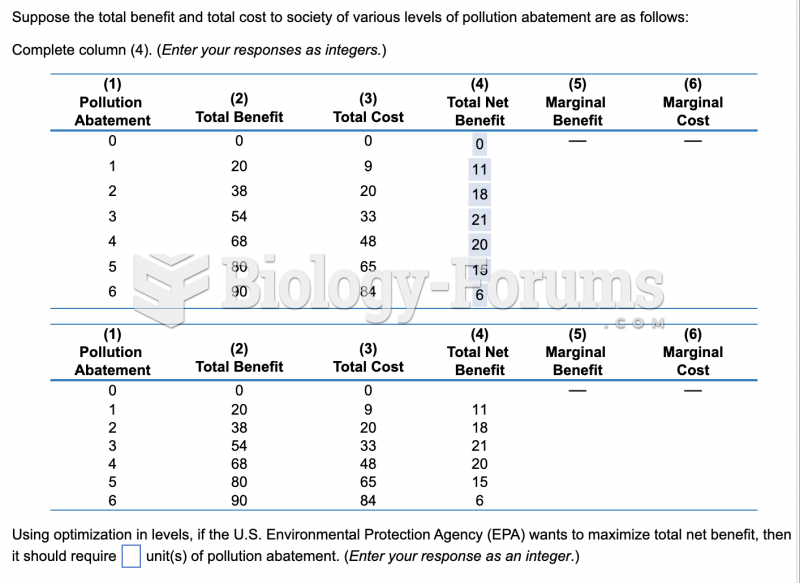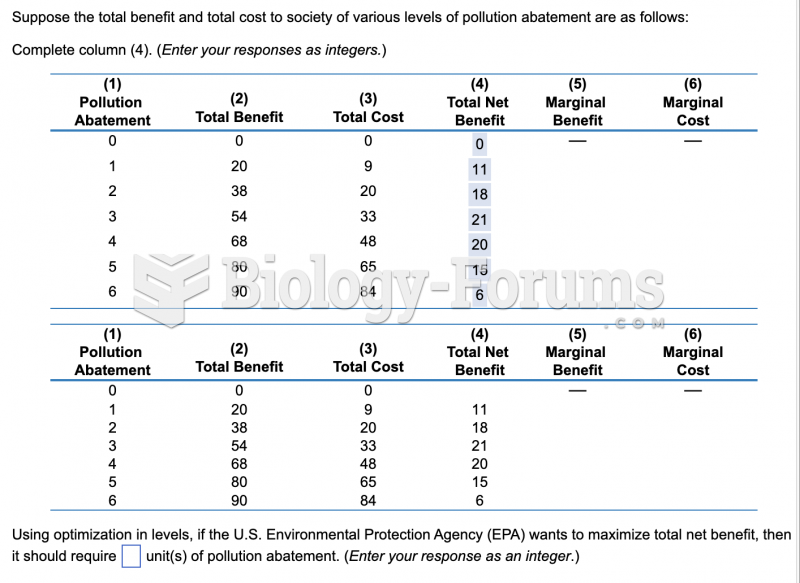|
|
|
More than 150,000 Americans killed by cardiovascular disease are younger than the age of 65 years.
Medication errors are three times higher among children and infants than with adults.
Most childhood vaccines are 90–99% effective in preventing disease. Side effects are rarely serious.
The Centers for Disease Control and Prevention (CDC) was originally known as the Communicable Disease Center, which was formed to fight malaria. It was originally headquartered in Atlanta, Georgia, since the Southern states faced the worst threat from malaria.
Prostaglandins were first isolated from human semen in Sweden in the 1930s. They were so named because the researcher thought that they came from the prostate gland. In fact, prostaglandins exist and are synthesized in almost every cell of the body.







